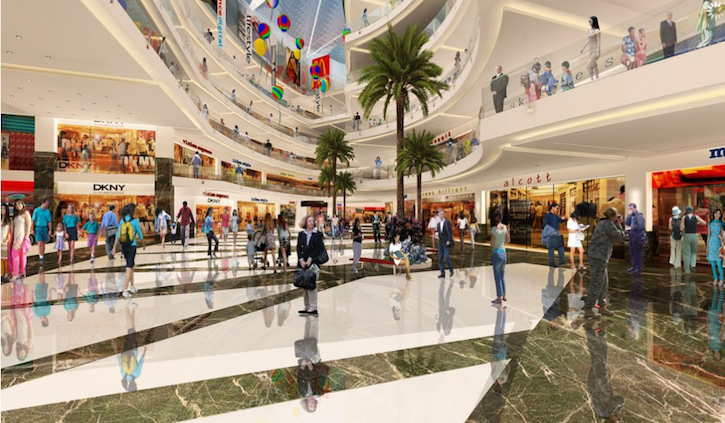Leading shopping mall owners are well aware of that fact, and they’re not afraid to spend in order to remain relevant.
The continuing rise of e-commerce has long been portrayed as something that will lead to the death of brick-and-mortar retail, but the reality is vastly different. The reality is that there is plenty of room for both means of transacting business to thrive, but that comes with a caveat. In both cases, only the strong will survive, and that means a willingness to adapt is imperative.
Sarath's City Capital Mall
As Bloomberg shares, leading shopping mall owners are well aware of that fact, and they’re not afraid to spend in order to remain relevant. Take the case of Simon Property Group, for example. Granted, the industry giant has resources that smaller operators can only dream of, but there’s a reason the company consistently stays at the top of the charts when it comes to sales and foot traffic. When things need to get fixed, they get fixed. When it’s time to shake things up with a remodel or redesign, the company will pour resources into that as well.
“We spent a lot of capital in the portfolio to upgrade the look and feel. We’re going to continue to do that,” CEO David Simon said during a call with analysts earlier this year. “I think the returns will be there, and I don’t think the dynamics of today’s current environment have changed that.”
Regardless of the financial standing of the owner or principals involved, there’s risk involved anytime there’s a capital outlay. There’s no getting around that, and that’s not magically offset just because of your standing in the industry. As Ami Ziff, director of national retail at New York-based Time Equities, explains, owners need to take things on a case by case basis, as there’s no simple one size fits all solution. “It’s not always an exact science quantifying the return on investment when it comes to mall renovations and redevelopments,” he said. “Every property has its own story.”
Of course, sometimes the expenditures come up out of the blue. The rash of closings among big department stores and other retailers can lead plans to change in a hurry, but sometimes the best course of action is to take advantage of the opportunities as they present themselves.
“If Sears shuts down, you need to reinvent that part of the mall,” said Cedrik Lachance, director of US REIT research at Green Street Advisors. “Typically, when you reinvent one part of the mall, you redevelop the whole mall.”
In short, there’s plenty of room for malls to stay relevant in today’s day and age, but there’s a good chance that it’s going to cost you to make sure that happens.
10 JULY 2017, USA
Source:
Bloomberg

 Boohoo expands online presence with new marketplace for fashion
Boohoo expands online presence with new marketplace for fashion Victoria's Secret expands presence in Melbourne
Victoria's Secret expands presence in Melbourne Inditex's Bershka set to enter indian market with Mumbai store
Inditex's Bershka set to enter indian market with Mumbai store Ross stores expands across the U.S. with 24 new locations
Ross stores expands across the U.S. with 24 new locations Chaumet opens doors to debut boutique in Italy
Chaumet opens doors to debut boutique in Italy Birkenstock is launching first store in France
Birkenstock is launching first store in France Salomon elevates brand presence with new Paris flagships
Salomon elevates brand presence with new Paris flagships  Amiri expands presence in California
Amiri expands presence in California  Crocs expands its presence in India with Apparel Group
Crocs expands its presence in India with Apparel Group  Best Buy Canada to expand presence with 167 small-format locations
Best Buy Canada to expand presence with 167 small-format locations  Arket expands into Italy with Milan flagship
Arket expands into Italy with Milan flagship